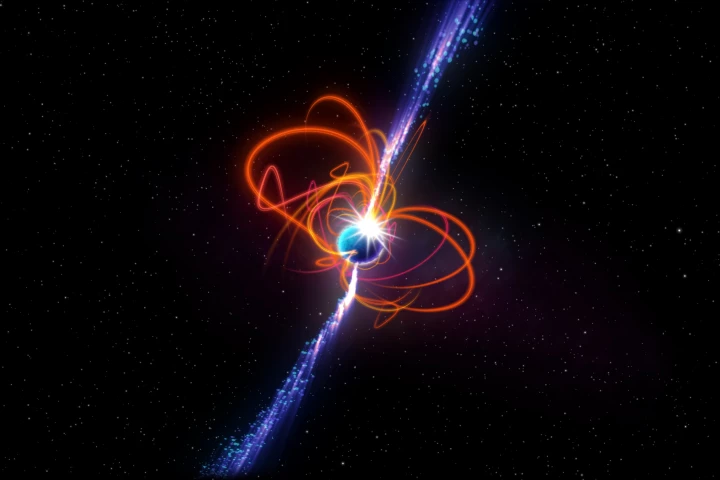Fast Radio Bursts
The latest news on fast radio bursts (FRBs), strange signals from space.
-
Astronomers have detected a really bizarre radio signal from space that repeats every hour, cycling through three different states. While they have some ideas about its origin it can’t be explained by our current understanding of physics.
-
Astronomers have picked up a radio signal from eight billion years ago, meaning it’s traveled across the observable universe to get here. Thanks to its extensive experience in the cosmos, the signal can actually help us track down “missing” matter.
-
Cosmic radio signals are beaming to Earth every day – and astronomers are stumped as to their origin. Now a new study finds evidence that these signals, known as fast radio bursts (FRBs), could be caused by “starquakes.”
-
Astronomers have detected a radio signal that blares for several minutes at a time, every 21 minutes, and has been doing so for at least 35 years. This bizarre signal doesn’t fit any known object without some major revisions to current physics.
-
Over the last 15 years astronomers have detected hundreds of unexplained radio signals from space – fast radio bursts (FRBs). Now a fresh look at radio telescope data has doubled the number of known sources, bringing us closer to solving the mystery.
-
The intriguing cosmic mystery of fast radio bursts (FRBs) has now shed light (pun intended) on another mystery. By studying the signature of an FRB from a nearby galaxy, astronomers have found that the Milky Way has far less matter than expected.
-
Astronomers have detected an extremely strange radio signal from a distant galaxy that pulses with a heartbeat-like rhythm. This signal lasted about 1,000 times longer than other fast radio bursts, and had a clear periodic pattern to its pulses.
-
Astronomers have discovered a strange neutron star that challenges our understanding of them – but may help unlock the mystery of fast radio bursts. The object spins far slower than any known neutron star, and gives off seven types of radio pulses.
-
A new signal deepens the mystery of fast radio bursts with a few oddities – it hails from an unexpected region of space, and its pulses are about a million times shorter than most, which could indicate many others like it are going undetected.
-
Astronomers have discovered a bizarre radio signal in our galaxy that can’t be explained by any known object. When active the source gives off radio bursts lasting a minute, every 20 minutes, which should be impossible based on what we know about it.
-
A huge new dataset could soon help unlock the mystery of fast radio bursts (FRBs). Within a few weeks, over 1,600 new signals were detected coming from one of the most well-studied sources, essentially ruling out a leading hypothesis on their origin.
-
We might be one step closer to an answer for the intriguing cosmic mystery of fast radio bursts. By examining multiple “radio colors” simultaneously in a batch of repeating signals, astronomers have ruled out a leading model for their origin.
Load More











